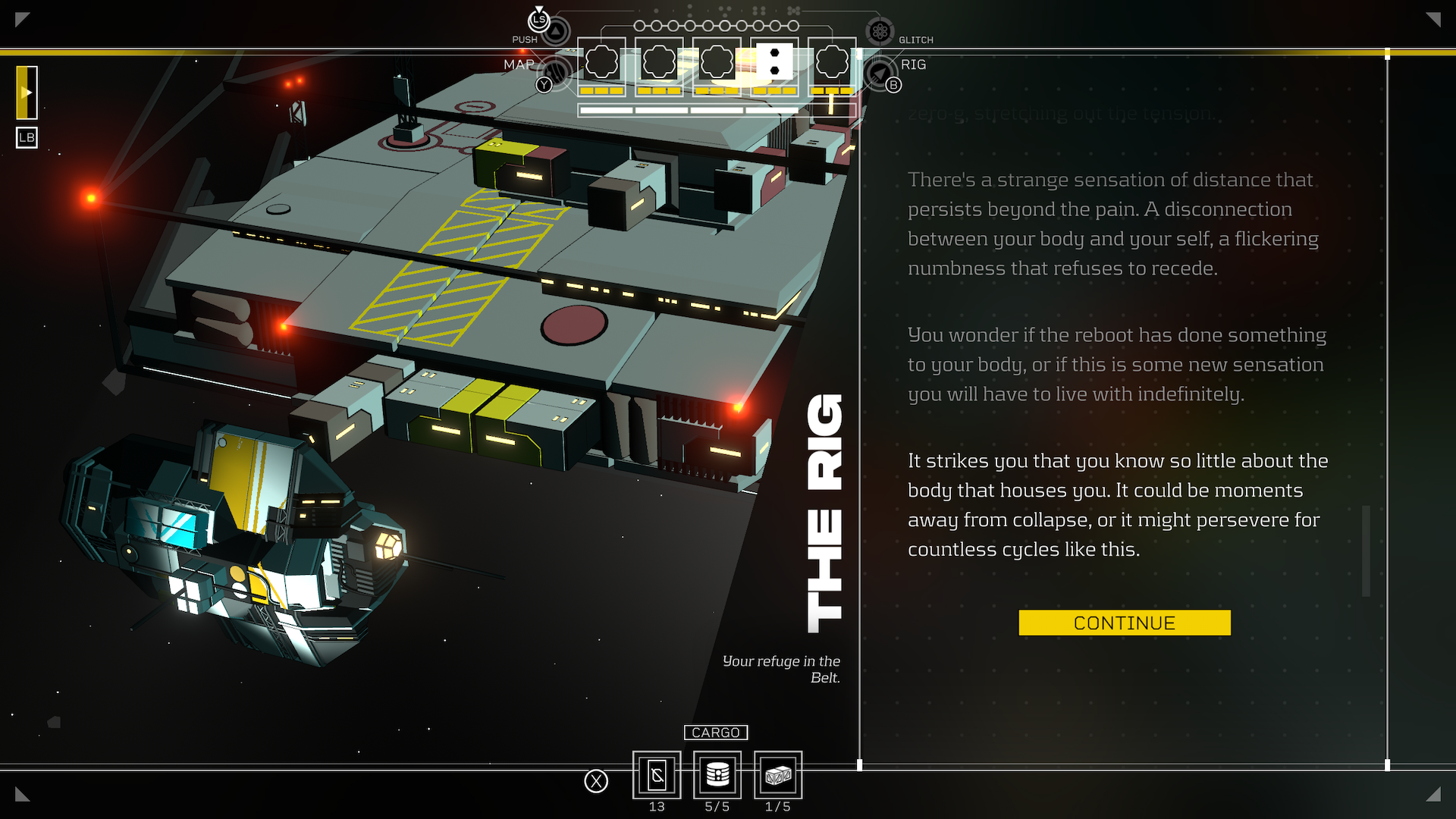When Citizen Sleeper first came out, it had the benefit of being an unknown quantity: a new world, a novel form of gameplay, everyone kind of discovering what its whole deal was together. The game was smartly written, with lots for the player to chew on in the subjects of mortality, embodiment, interdependence and community. It received accolades, and rightfully so. But at the end of the day, it was also a game you could solve, once you got your bearings. You could learn who to talk to, where to go, to optimize your Sleeper’s fugitive existence on Erlin’s Eye. You could minmax the rate of bodily decay and cheese your way through successful dice checks for the “best” experiences in any given conversation or interaction. After your first furtive, maybe failed session, you could learn how to game the whole system and become the most ideal version of your Sleeper avatar. This trivialized the end of the game, made it merely a matter of surviving attrition, and had to be dealt with in the DLC by compressing events to just a few cycles. Sure, you had your optimal survival rotation, but would it still be optimal in the face of total station destruction in six or so turns? Could you cheese dice rolls with a ticking clock breathing down your neck?
Flux, Refuge and Purge, the three DLC episodes following Citizen Sleeper‘s main campaign, are good previews of what to expect from Citizen Sleeper 2: Starward Vector. It is a game where, at least in its opening salvo, you have very little time to think, to plan, to optimize, and there is immense pressure on you to act. Failure is unavoidable, and there are consequences to your actions—but it (usually) leads to better outcomes than not acting at all.
In Citizen Sleeper, the bulk of your time is spent procuring stabilizer, a cocktail of enzymes and chemicals designed to reset your Sleeper’s artificial body’s rate of decay, dubbed “planned obsolescence” by the company that made you, Essen Arp. Starward Vector does away with this concern immediately by waking you up in the middle of a reboot procedure designed to completely remove your dependence on stabilizer. While on the narrative front this awakening in media res signifies some other shit hitting the fan, you find that, mechanically, no longer needing stabilizer to live has not obviated you of other survival needs. Sleeper’s gotta eat, Sleeper gets stressed, and sometimes Sleeper’s luck isn’t so good. You need money, you need supplies and fuel for your ship, you have to get away from the mob boss chasing you, you’ve gotta fulfill contractual obligations—put simply, life is complicated and messy and no amount of planning will account for everything that could possibly go wrong.
There is a difficulty scale in Starward Vector that mostly has to do with the result of your dice rolls and ability to take on stress during contract flights—in other words, consequences. The “Safe” option is as close to Citizen Sleeper gets to a story mode: the consequences of failure don’t affect you as significantly, you can still roll broken dice, your stress tolerance is much higher than the other two difficulties, and your actions are unlikely to lead you to an untimely demise (death is disabled entirely). In this difficulty mode, you can still experience temporary and permanent glitches, where dice are 80 percent likely to produce a negative outcome, but you’re not on the razor’s edge of life and death here.
“Risky” is roughly at the level of Citizen Sleeper the First’s gameplay difficulty. You have to monitor your energy and stress levels or risk broken dice and permanent glitches; you won’t be able to use broken dice at all; and coming back from death will put a significant dampener on your abilities. “Dangerous” includes permadeath and much more serious consequences for failure, with a much tighter window for trying to pull up from disaster.
Ultimately, these playmodes are going to affect your experience in the game more than even the different kinds of Sleeper you can be, like Extractor or Operator; the classes primarily determine what kind of actions you have strengths and weaknesses in, and what kind of push abilities you can perform.
The most important thing I think Citizen Sleeper 2 does is show that there are different kinds of “failure,” and not all of them are bad. Like, in the very first contract, you can choose to deliver a ship mind core to a parts dealer or let the hacker you brought with you download the data and destroy the core. If you do the delivery, the dealer tries trapping you in their warehouse to get money for the bounty on your head; if you let the hacker destroy the data (failing the contract), she’ll help you steal the part you needed from the dealer. Strict failure in these terms meant opening a path to other opportunities. A lot of the game is like this. You will have to weigh the consequences of your decisions carefully, but even “bad ends” can lead to positive outcomes.
I think it’s important to emphasize this – that imperfect results are not always bad results – in the moment we live in. I think we all get so caught up in trying to figure out what to do and being afraid of doing something incorrectly that actually doing things becomes impossible. “Sometimes you can only find out what the risks are by taking a chance.”

Response
[…] Citizen Sleeper 2: Starward Vector imperfectly builds on its imperfect predecessor | No Escape Kaile Hultner thinks about Starward Vector‘s more holistic narrative approach to failure. […]